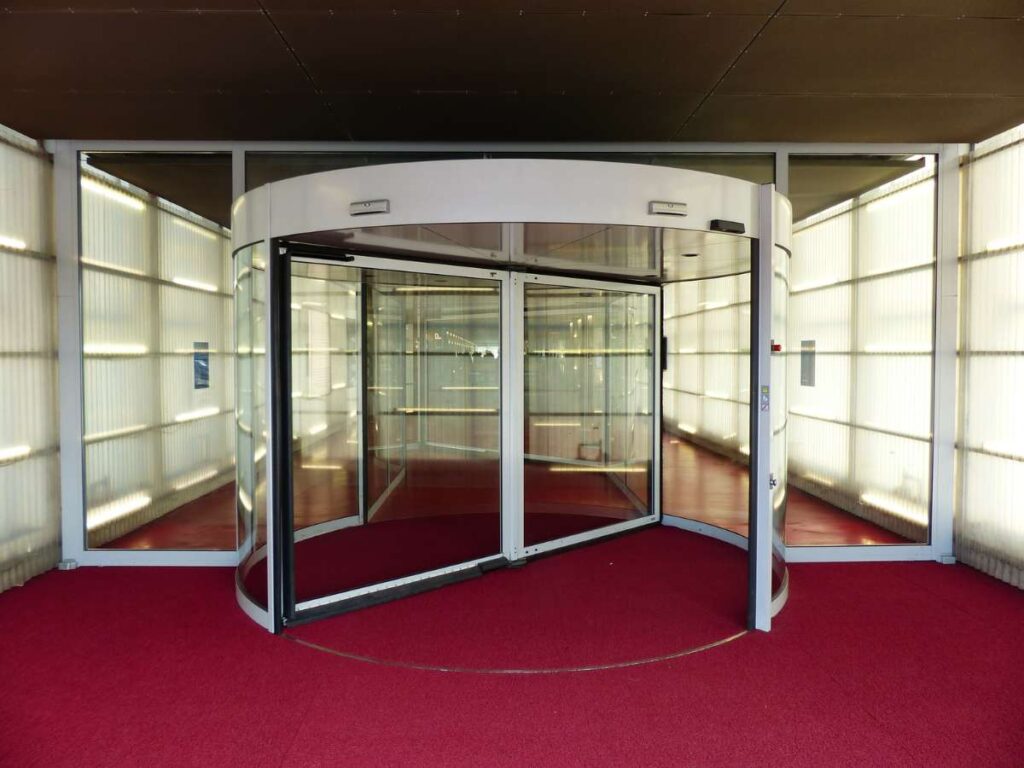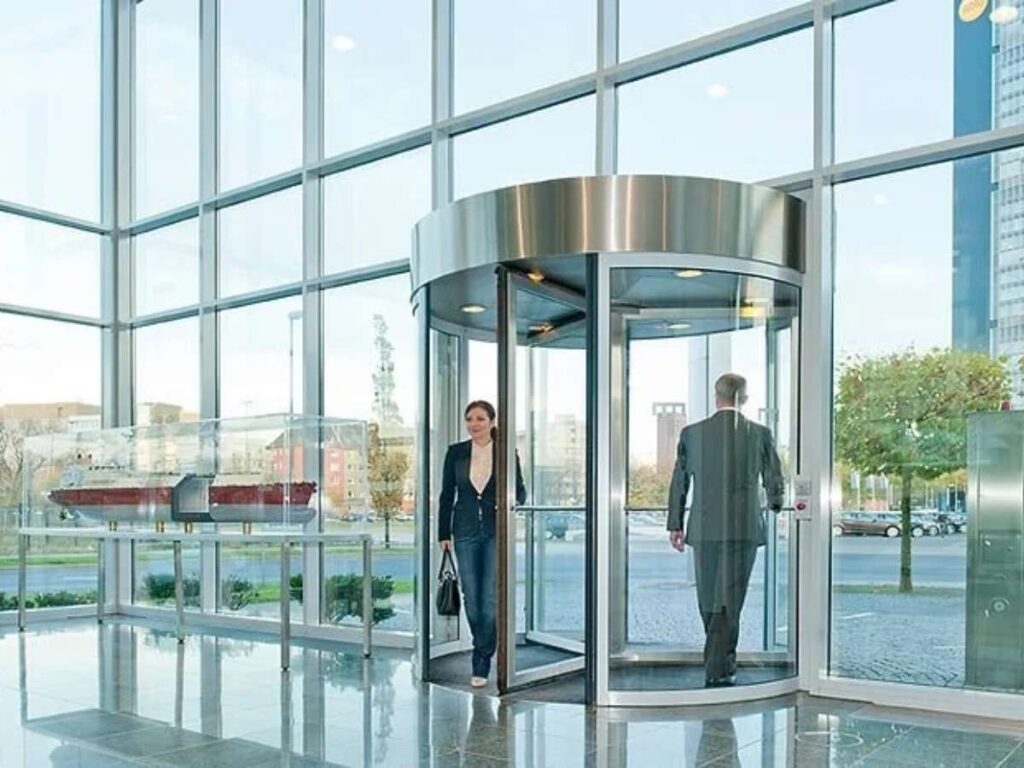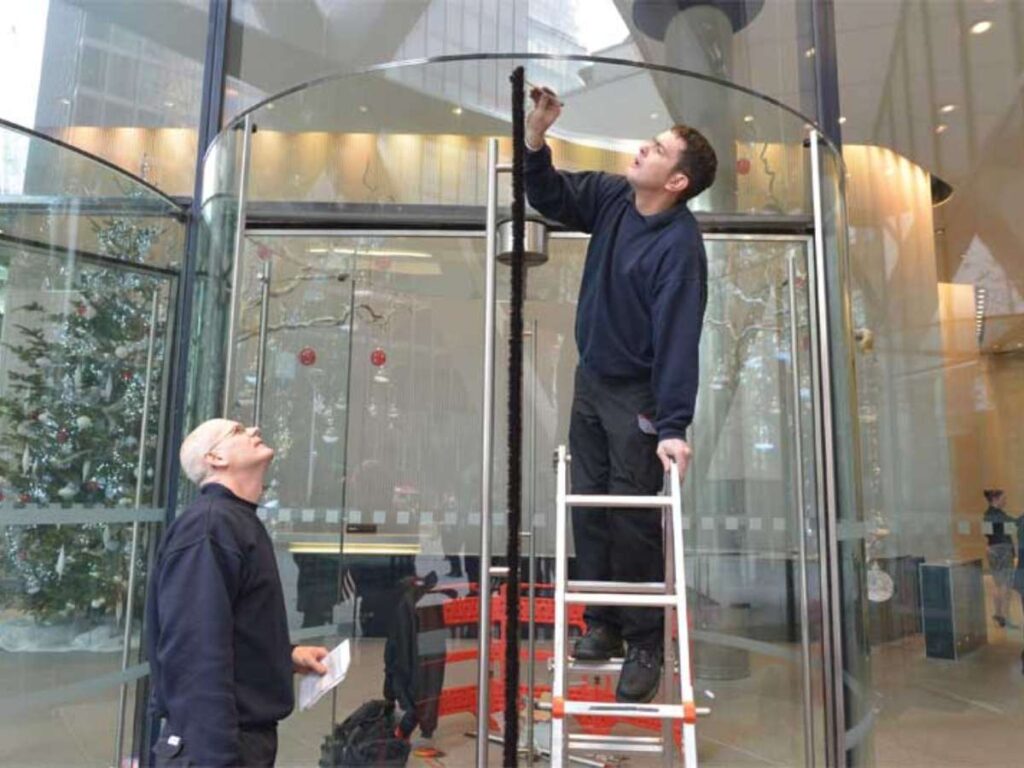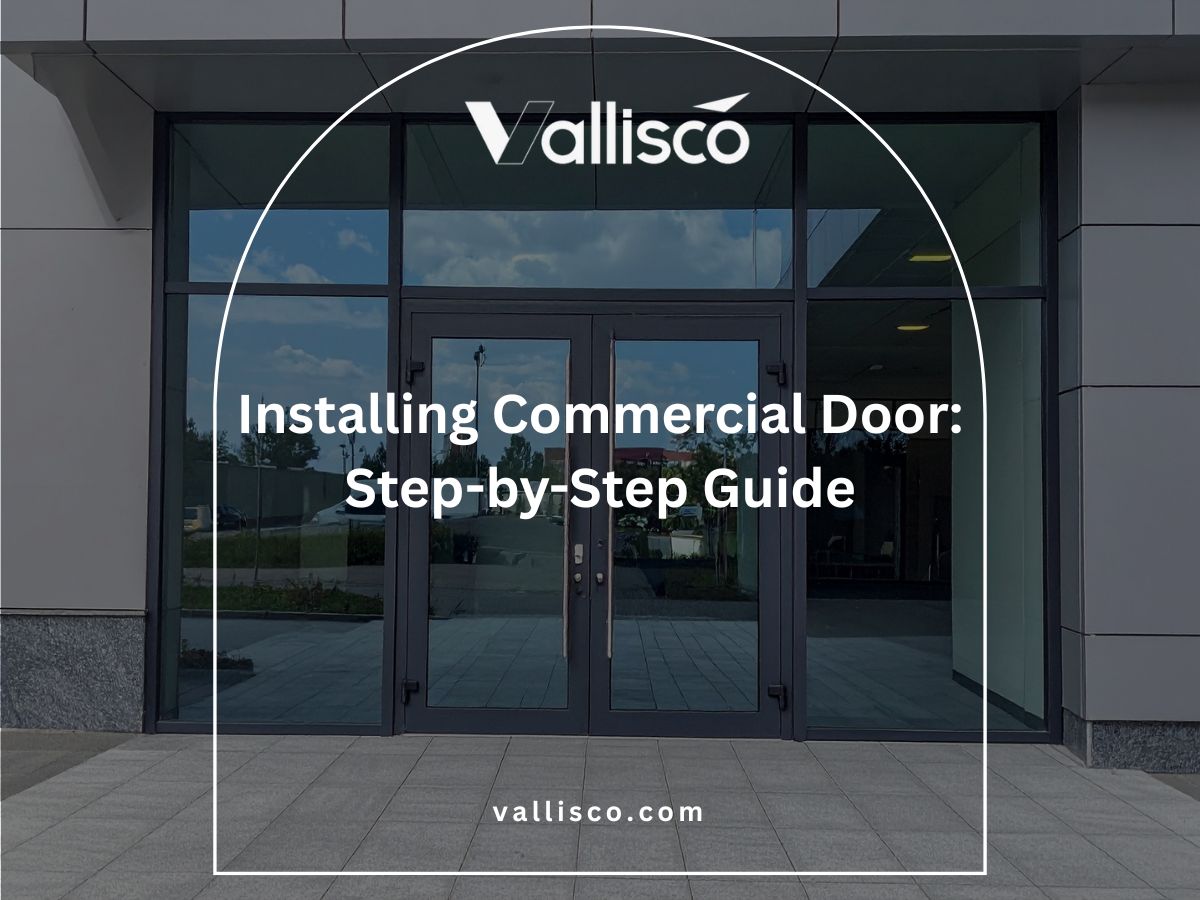During a visit to a busy hotel, I noticed guests moving smoothly through a revolving door. The nearby sliding doors kept letting in gusts of wind, but the revolving door kept the lobby calm.
It made me wonder why hotels often choose revolving doors instead of standard entryways.
I work in the building materials industry, helping commercial properties select and install the right doors and windows. Over the years, I have reviewed many revolving door installations with engineers and suppliers.
In this article, you will see how revolving doors work, why they are used in hotels, and what to consider when planning your own projects.
By the end, your questions about their function and value will be answered.
So, let’s get started!
1. What is a Revolving Door?
A revolving door is a set of panels that rotate around a central shaft. Instead of swinging open and shut like a regular door, it keeps turning so people can walk in and out continuously.
I look at revolving doors as more than just an entrance. For your projects, they manage foot traffic, reduce drafts, and help save energy. I’ve seen hotels and offices choose them because they keep the lobby comfortable and organized, even during busy hours.
2. Basic Mechanism of Revolving Door
From my experience working with hotels and commercial spaces, a revolving door is built to do three things well: manage traffic, keep energy costs down, and maintain a polished look at the entrance. The setup usually has three or four panels fixed to a central shaft, with curved side walls guiding the rotation.
In many projects I’ve seen, these doors are either manual or automatic. Automatic models are the most common for busy properties. Here’s how they generally work:
- Sensors and Activation: The door detects people approaching and begins to rotate without anyone pushing.
- Drive System and Control: A motor powers the door, and a control unit adjusts the speed so guests can pass through comfortably. Vallisco designs door systems that balance smooth operation with safety, an essential feature in hotel environments. Their engineering also focuses on reducing wear on components, which helps extend service life.
- Safety Features: Built-in sensors stop the rotation if something blocks the path or if there’s an emergency.
Another detail I always point out to clients is how the panels seal against the curved side walls. This design blocks drafts and keeps the lobby comfortable, even when traffic is heavy. In the long run, that means lower heating and cooling costs for your building.

3. Components and Its Uses
Whenever I walk project teams through a revolving door system, I break it down into simple parts. Each component has a purpose, and together they make the door work smoothly. For you, knowing these pieces helps when you’re discussing installation, maintenance, or even replacement with your suppliers.
Here’s a table I often use to explain it:
| Component | Use in the Door System |
| Central Shaft | The backbone of the door, holding the panels in place and allowing smooth rotation. |
| Wings or Panels | Create separate compartments for people to walk through, keeping flow steady. |
| Curved Side Walls | Guide the rotation and form a seal that blocks drafts from outside. |
| Drive System | Powers the rotation. Can be manual (push to turn) or automatic (motor-controlled). |
| Bearings | Reduce friction at the top and bottom so the shaft and panels rotate without resistance. |
| Sensors | Detect people approaching and start or adjust the movement automatically. |
| Safety Features | Stop the rotation if there’s an obstacle or emergency, protecting guests and staff. |
| Draft Brushes | Seal the edges of the panels, preventing air from leaking in or out. |
I’ve found that once clients understand these components, they feel more confident in discussing revolving doors with their contractors or engineers. It keeps the conversation practical instead of overly technical.
4. Key Features of Revolving Doors
When I explain revolving doors to clients, I focus on what makes them stand out in daily use. These features are the reasons hotels, malls, and offices continue to rely on them. For your projects, knowing these details helps you match the right door to your property’s needs:
Energy Efficiency
One of the strongest features of a revolving door is how it controls air exchange. Because the panels always seal against the curved walls, outdoor air doesn’t rush in every time someone enters. This helps keep lobbies warm in the winter and cool in the summer.
I’ve seen hotel operators notice real savings on energy bills after switching from traditional swinging doors. For your property, this means lower costs while still keeping guests comfortable.
Traffic Flow Management
Revolving doors are built for steady movement. Guests can enter and exit at the same time, and there’s no bottleneck like you often see with single swing doors. This is especially important in hotels where check-in times bring heavy traffic.
I’ve worked with teams who appreciated how these doors reduced lobby congestion during peak hours. For you, it means a smoother guest experience without extra staff managing the entryway.
Safety and Control
Modern revolving doors are designed with built-in safety systems. Sensors detect movement and can stop the rotation if there’s an obstacle in the way. In emergencies, many models have a quick break-out function, letting the panels fold flat for fast evacuation.
From my side, this is a feature clients often overlook until they see it in action. You can rest assured that safety is not sacrificed for design or convenience.
Aesthetic Value
Beyond function, revolving doors also send a message. They give an entrance a polished and professional look, which matters in hospitality and corporate settings. Guests often notice the smooth flow and consider it part of the overall experience.
I’ve heard hotel managers say their revolving doors became part of the brand image, making the property feel more refined.

5. How To Install Revolving Door Safely
I always tell clients that installing a revolving door is a process where each step supports the next. If one stage is skipped, the door may never feel right. Let’s walk through it step by step.
Step 1: Prepare the Site
Before anything else, the entrance has to be ready. A solid foundation is what every later step depends on.
- Clear the Entrance: Remove clutter so your crew can move freely. A clean site keeps the work safe and efficient.
- Check Floor Level: Make sure the base is flat and stable. Even a slight slope can cause long-term rotation problems.
- Plan Electrical Setup: Arrange wiring for automatic models in advance. It avoids costly changes once the frame is in place
Step 2: Position the Frame
Once the site is ready, it’s time to set the frame. A precise frame makes installing the shaft and panels much smoother.
- Place the Frame: Center it in the entrance opening. This ensures the panels won’t rub against the side walls later.
- Secure Base and Top: Anchor the bottom and top firmly. A locked frame prevents shifting when panels are added.
- Recheck Measurements: Confirm width and height after placement. Small mistakes now can affect comfort in the lobby.
Step 3: Install the Central Shaft and Panels
With the frame stable, the shaft and panels can go in. This is the stage where the door begins to take shape.
- Fix the Shaft: Position it vertically at the center. A straight shaft guarantees smooth rotation.
- Attach Panels: Connect each panel evenly to the shaft. Balanced panels keep traffic flowing without resistance.
- Test Rotation: Turn the panels manually before automation. This helps catch alignment issues early.
Step 4: Connect the Drive and Control Systems
After the structure is in place, the door needs power and control. This step adds consistency and safety to the movement.
- Install the Motor: Fit the motor securely to the shaft. A proper mount reduces vibration and noise.
- Wire the Control Unit: Link it to the motor and set the speed. A well-calibrated speed balances guest comfort and flow. Vallisco doors are easy to integrate with wiring systems, and additional sensors can be connected smoothly if needed.
- Add Sensors: Place sensors near the entrance. They detect users and protect against accidents.
Step 5: Test Safety and Final Adjustments
The last step brings all the work together. This is where you confirm the door is safe and ready for daily use.
- Check Emergency Stop: Trigger the system and watch the response. The door should stop instantly every time.
- Run Walk-Throughs: Have several people use the door at once. Real use shows if adjustments are needed.
- Fine-Tune Brushes and Seals: Inspect the seals against the curved walls. Proper sealing reduces drafts and energy loss.
I’ve seen revolving doors installed both carelessly and carefully, and the difference is obvious. When each step is done right, you end up with a safe, reliable system that supports your building’s daily operations.

Conclusion
We started with a hotel example. It showed how one revolving door shaped the entire guest experience. That same lesson carries through every section of this article.
From the way panels move to the safety systems built inside, each part has a clear purpose.
The next step is selecting a trusted manufacturer. Vallisco produces doors that meet these daily demands with proven quality.
Contact us today and see how we can help your building succeed!
Explore Related Resources
Want to see more? We’ve gathered additional product choices to give you even more variety:
Still haven’t found what you’re looking for? Don’t hesitate to contact us. We’re available around the clock to assist you.







